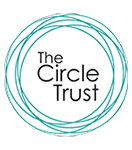What are Multi Academy Trusts?

The educational landscape in England is changing rapidly. In September 2019, 75% of all Secondary Schools academies and 33% of all Primary Schools have converted to become academies, independent of their local authority. The role of local authorities therefore is changing, with some struggling to provide the level of support and challenge previously offered.
Many schools are finding it difficult to navigate this new terrain. Their leaders and governors are unsure about the options available to them, concerned about the time, commitment and knowledge required to properly understand these choices. They are understandably burdened about the changing expectations on schools and concerned that decisions may be taken out of their hands if they struggle to meet those expectations. Equally, schools remain zealous in wanting the very best for the students for whom they are responsible and are rightly discerning in partnering with others.
Some definitions:
Academies are publicly funded schools, independent of the local authority, held accountable through a legally binding funding agreement with the Department for Education (DfE). Staff are employed by the academy trust.
Multi-academy trusts (MATs) are groups of academies that have come together to form a charitable company, with a single group of ‘members’ (who have an overview of the governance arrangements) and a single board of trustees. The Circle Trust is a MAT. Even as part of a MAT:
- individual schools remain as separate entities, with separate names and DfE numbers
- individual schools still receive separate Ofsted judgements and performance tables are still based on individual schools
MATs are set up as charitable companies and are accountable directly to the Secretary of State through the regional schools’ commissioners.

Governance
As charitable companies, MATs have articles of association and a scheme of delegation, legal documents that set out the governance composition and procedures for the Trust. The people on the main governing board of a MAT are known as Trustees. These roles come with specific legal responsibilities which include:
- ensuring the organisation remains solvent and spends money in accordance with its charitable objectives
- ensuring the schools in the MAT provide a good standard of education
- managing any conflicts of interest
MATs are also required to have a group of members who sit above the board of trustees. The members have a hands-off, but significant, role. They monitor the performance of the trust and hold the trustees to account. They appoint Trustees and the Executive Headteacher. They will intervene if the Trustees are not performing by making changes at board level.
Responsibilities
MATs are required to produce a ‘scheme of delegation’ which outlines what decisions are taken by whom and at what level of the organisation. MATs must also comply with the Academies Financial Handbook which acts as the financial framework for academy trusts and sets out the financial governance requirements that all trusts must adhere to.
It is also possible to have different approaches to schools within a group and to give more autonomy to high-performing schools than struggling schools (sometimes referred to as an ‘earned autonomy’).

Chief Executive Officer
The Chief Executive Officer provides high level strategic leadership and management across all aspects of the trusts activities and holds the legal responsibilities of the Accounting Officer. The Headteachers of the schools in the MAT hold the same legal responsibilities as the Headteacher in an individual school, but are performance-managed by the Chief Executive Officer.
Vision and ethos
There are a number of legal and practical considerations that schools ought to consider when joining a MAT. The most important consideration is the vision and ethos of the MAT. Whilst this cannot be legislated for, a good match is essential if the partnership is to be successful.
Joining a MAT
Only academies can join a MAT. Maintained schools wishing to join a MAT must convert to academy status and join the MAT at the same time – there is no requirement to be a standalone academy first. The Circle Trust has expertise and clear procedures in place to help schools manage the conversion process.

Effect on school budgets
Academies are funded directly from the DfE. MATs require a central service contribution which is an agreed proportion of the budget to fund central services, such as finance and HR. MATs can choose to vary the budget they devolve to each school in order to address particular needs.
An Academy Support Grant is available to help any maintained school convert to academy status. The DfE provides £25,000 to each converting school to help with the costs of conversion. Sadly this does not mean a school enjoys an additional 25K virtually all funds are used in the conversion process!
Grants are also available to MATs to sponsor other schools in special measures or, in some cases, those which are categorised as ‘requires improvement’.
Geographical proximity
There is no legal requirement for schools in a group to be in close geographical proximity and there are a few examples of successful MATs with schools many miles apart.
However, emerging evidence, and perhaps basic common sense, suggests that the benefits of collaboration are much easier to realise when schools are physically close.

Phase
MATs can be cross-phase and involve a range of types of schools.
Decisions
Whether or not to enter into a MAT is a decision that needs to be taken by the Governing Body of the school.

Would you like to find out more?
If you would like to know more about The Circle Trust, please contact us via contact@thecircletrust.co.uk

